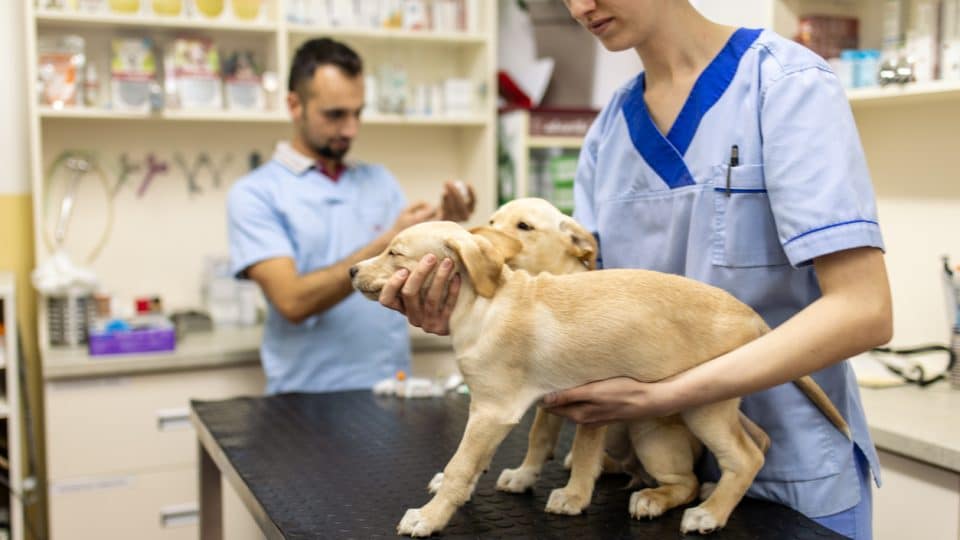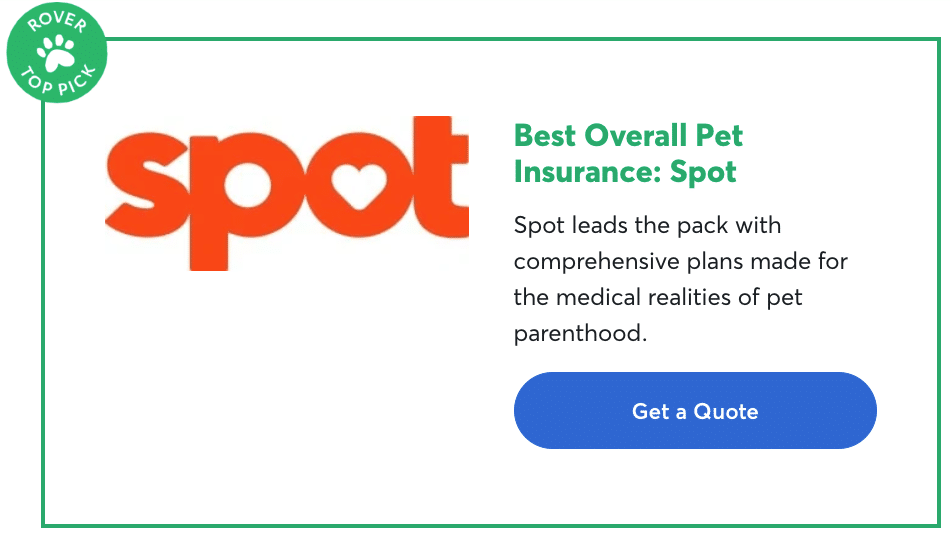- This post contains affiliate links. Read more here.
- Not a substitute for professional veterinary help.
- The insurance advice, products, and links below are intended for and only available in the states where Rover Pet Insurance Services, LLC is licensed as an insurance producer.Full Disclosure
One of the most frustrating elements of health insurance is ensuring your provider accepts your insurance before you seek care from them, and the differences in in-network and out-of-network coverage can be confusing.
Pet parents interested in insurance for their pets may be wondering if they have to deal with similar headaches when shopping for pet insurance—and the answer is “no.”
Do All Veterinarians Take Pet Insurance?
The short answer is yes, all veterinarians accept pet insurance—but this is because pet insurance works differently than human health insurance, and veterinarians are (usually) removed from the pet insurance process.
Most pet insurance policies allow you to choose any licensed veterinarian, with no “in network” or “out of network” providers. And instead of offering coverage up front like human health insurance, pet parents will usually pay their own expenses up front—in all but a few instances—and then submit their invoices and medical records to their provider for reimbursement.
Let’s get into more of the nitty gritty below.
How Does Pet Insurance Work?
While pet insurance works differently than human health insurance in the way that you’re reimbursed, it’s similar in a lot of other ways. As a policyholder, you’ll pay a monthly premium, and your vet bills will be partly or fully reimbursed (based on your coverage guidelines and provider) by your insurer once you’ve reached your deductible. Vet bills that are eligible will be covered until you hit your policy’s annual limit.
There are three different kinds of pet insurance plans, all with different coverage options: a standard accident and illness plan (the most comprehensive), accident-only coverage (considered catastrophic), and wellness plan add-ons, which are preventative care packages that are added on as a rider to comprehensive care, rather than as standalone options. Specific treatments and conditions that are covered under each type of plan vary depending on your insurance provider.
When selecting a pet insurance plan, it’s crucial to carefully review the policy details, including coverage limits, deductibles, and any exclusions. Some policies may have waiting periods before certain conditions are covered, so it’s important to be aware of these terms.
How does the claims process work?
The claims process is a crucial part of pet insurance. After receiving veterinary care, pet parents need to submit a claim to their insurance provider for reimbursement. The process typically involves the following steps:
- Pay the vet bill: If the veterinarian does not use direct vet pay (more on this later), the pet owner pays the bill in full at the time of service.
- Gather records and invoices: Request an itemized invoice for the visit along with any necessary medical records from the veterinarian.
- Submit claim form: Complete the insurance provider’s claim form, attaching the invoice and records. This can usually be done online via your provider’s website or app, or even by mail.
- Wait for processing: After submitting the claim, the insurance company will review the documents and process the claim. Depending on your provider, this typically takes anywhere from a few days to a month.
- Receive reimbursement: Once the claim is approved, the pet owner will receive reimbursement for the covered expenses. Most pet insurance providers offer reimbursement via direct deposit or check in the mail–whichever you prefer.
How does reimbursement work?
Reimbursement in pet insurance refers to the amount the insurance company pays the pet owner after a claim is approved and deductible is met. The reimbursement percentage varies depending on the chosen plan, ranging from 70% to 90% of eligible expenses.
Understanding the reimbursement process will help you manage veterinary expenses effectively. Pet parents should review their insurance policy to determine the reimbursement percentage, any applicable deductibles, and coverage limits to make informed decisions about their pet’s care.
What is direct vet pay?
Most pet insurance companies operate on a reimbursement model, but a few also offer a system called direct vet pay, which means that instead of pet parents paying vet expenses upfront, the insurance provider pays the vet directly. In this way, direct vet pay works more like traditional human health insurance.
Before you settle on a provider who offers direct vet pay, you’ll also need to check with your veterinarian to make sure they accept direct payments from your provider.
There aren’t many pet insurance companies who offer direct vet pay, but below are three providers who do (in addition to offering the traditional reimbursement model):
- PawProtect
- Pets Best
- Trupanion
Further Reading
- Is Pet Insurance Worth It? How To Know If It’s a Good Deal for Your Pet
- What Does Pet Insurance Cover, and How Does It Work? A Beginner’s Guide
- How Does a Pre-Existing Condition Affect Pet Insurance Coverage?
- The Best Pet Insurance Wellness Plans: How Preventive Care Add-Ons Work
- How To Choose the Right Insurance for Your Pet
- How Much Does Pet Insurance Cost?
- What To Know About Waiting Periods and Pet Insurance
- What Are Pet Insurance Deductibles, and How Do You Pick One?
- When Should You Get Pet Insurance?
- Savings Account Versus Pet Insurance: Which Is Better?




